Welcome to the Additional Resources section. Here you will find external resources to guide or supplement what you find on this website.
Resources contained here are broken down into two categories: Online Resources and Further Readings. If you want to continue your search online, that's the place to go. Everything there is available on the internet. If you want to move your search offline and find books, articles, or other resources not available online, look in the "Further Readings" section.
Both of these sections will give you a list of resources, each of which has a brief description and a link or reference information to use to find the resource.
Enjoy!
Online Resources
This is a curated list of online resources related to the atomic bomb for users to explore and use as an initiator for further research and investigation.
Nagasaki Archive
The Nagasaki Archive is a collection of stories, videos, and images of post-bombing Nagasaki arranged onto a map by the location of exposure of victims. Not all of it is in English, but it's powerful nonetheless.
Hiroshima Archive
The Hiroshima version of the Nagasaki Archive, this page also gives some background to the resource in English. To navigate to the map page, click "Digital Earth" in the top right corner.
Hiroshima Peace Media Center
This website provides a range of media on peace in Hiroshima, including images, information about the Peace Park, and articles on important events.
Nagasaki: The Forgotten Bomb (2012) Documentary TV series
Looks at the necessity and appropriateness of dropping the second bomb
National Peace Memorial Halls GLOBAL NETWORK
This website contains memoirs, testimonials, and accounts of the atomic bombing of Nagasaki by survivors.
Nagasaki Atomic Bomb Museum Memorial Database
This website houses historical images taken shortly after the bombing, and is useful for illustrations of the damage or as a resource for projects.
Student Mobilization Special Exhibit
Here you can find a virtual museum of captioned images of student mobilization.
U.S. National Archives
The U.S. National Archives contain a lot of historical footage of post-war Japan and the occupation, as well as images and documents relating to the creation and use of atomic bombs.
Further Readings
This is a curated list of print/digital readings related to the atomic bomb for users to explore and use as an initiator for further research and investigation. Most of these print resources should be available through university libraries. You may also seek to purchase them through third-party sellers.
**Please be forewarned that many of the resources below tell graphic experiences of human suffering, death, and violence.**
Hibakusha (Atomic Bombing Survivor-Victims) Literature
Ibuse, Masuji. 1969. Black rain: a novel. Tokyo: Kodansha Intl.
One of the most representative works of atomic bombing literature. Widely available in English translation.
Nagai, Takashi. 1994. The bells of Nagasaki, Nagasaki no kane. English. Tokyo: Kodansha International.
The first-hand account of the Nagasaki atomic bombing by Dr. Takashi Nagai. This book also present Dr. Nagai’s influential, though controversial, Christian Catholic interpretation of the atomic bombing. Widely available in English translation.
Nakazawa, Keiji, Art Spiegelman, and Gen Project. 2004. Barefoot Gen: a cartoon story of Hiroshima, Hadashi no Gen. English. San Francisco, Calif.: Last Gasp of San Francisco.
An influential graphic novel written from the perspective of a boy who experiences the Hiroshima bombing. May be taught in conjunction with Art Spieglman’s Maus. Widely available in English translation.
Ōe, Kenzaburō. 1985. The Crazy iris and other stories of the atomic aftermath. New York: Grove Press.
A collection of short stories by men and women who survived the Nagasaki and Hiroshima bombings. The short stories offer varying perspectives and experiences. Available in English translation.
Well-known Works on Hiroshima and Nagasaki by American Journalists and Academics
Hersey, John. 1946. Hiroshima. New York: A. A. Knopf.
One of the most well-known accounts of Hiroshima by an American journalist. Hersey relays the destruction of the Hiroshima bomb and the stories of several survivors. We highly recommend comparing and contrasting Hersey's depictions and hibakusha survivors' own words and experiences on our website and in the recommend hiabkusha literature, above.
Southard, Susan. 2015. Nagasaki: life after nuclear war. New York, NY: Viking.
A historical journalistic treatment of the Nagasaki bombing. Southard also tells the immediate bombing experiences of five Nagasaki hibakusha and follows their life stories.
Treat, John Whittier. 1995. Writing ground zero: Japanese literature and the atomic bomb. Chicago: University of Chicago Press.
A scholarly literary analysis of different waves of Hiroshima and Nagasaki atomic bombing victim-survivor (hibakusha) literature. The perspectives offered by Treat are of interest to anyone who seeks to better understand the personal depths of human experiences of atomic warfare.
Weller, George. 2006. First into Nagasaki: the censored eyewitness dispatches on post-atomic Japan and its prisoners of war. New York: Crown Publishers.
History of the Atomic Bombing Casualty Commission (ABCC)
Lindee, M. Susan. 1994. Suffering made real: American science and the survivors at Hiroshima. Chicago: University of Chicago Press.
A historical study of the practices, politics, and logics guiding the genetics program at the ABCC. This work is especially of interest to those who want to know more about the history of official scientific explanations and understandings of human radiation biology during the Cold War.
Reconstruction of Nagasaki Following the Bombing
Diehl, Chad R. 2014. "Envisioning Nagasaki: from 'atomic wasteland' to 'international cultural city', 1945-1950." Urban History 41 (3):497-516.
This short academic journal article chronicles and analyzes the local and national decisions that led to the postwar rebuilding of Nagasaki as an “international cultural city,” as opposed to solely an everlasting symbol of nuclear warfare. This history is especially of interest to those who wish to better understand how and why contemporary Nagasaki rebuilt the way that it did.
